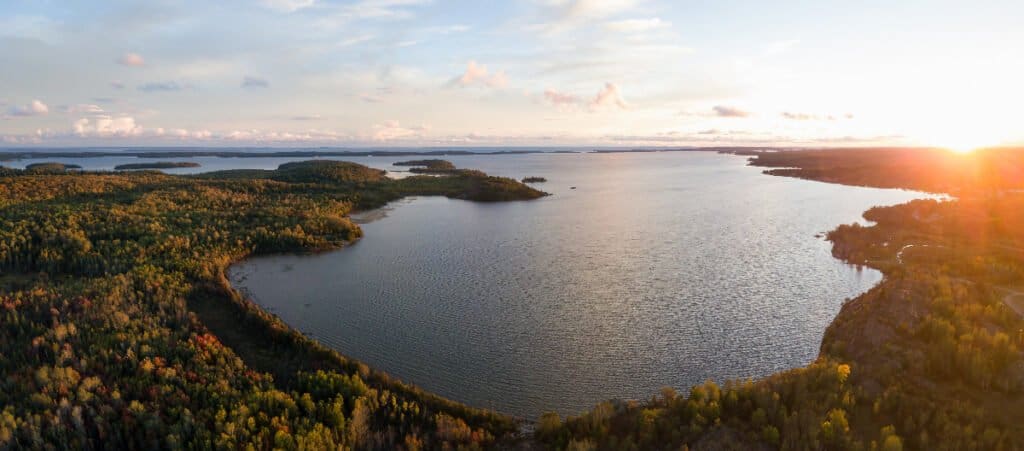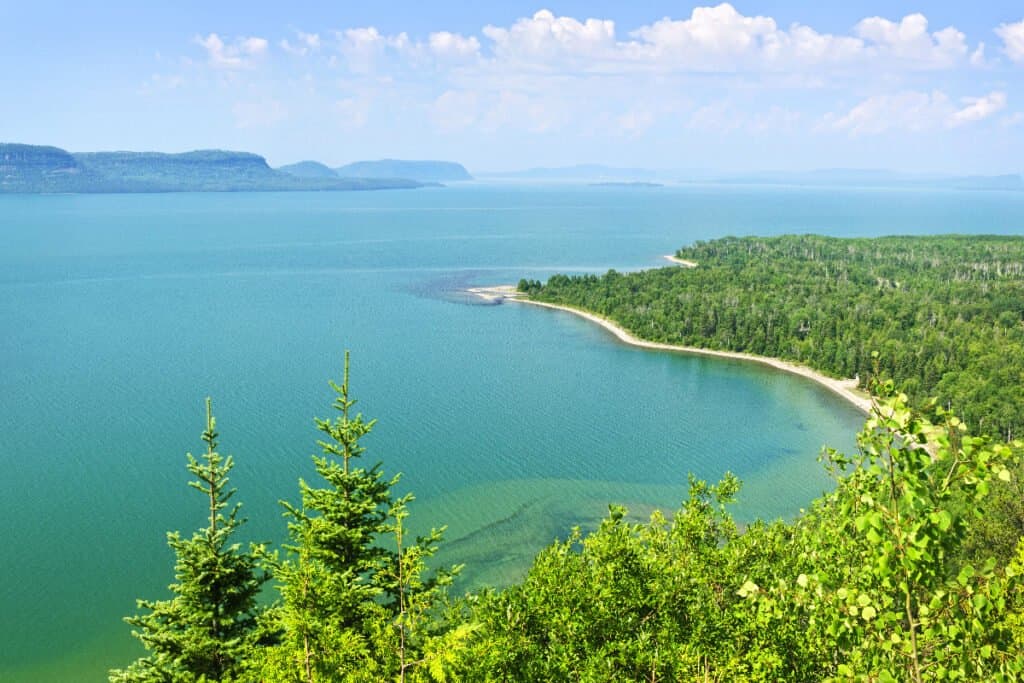Did you hear about the Lake Mead drought? Did you also think that it would eventually lead to a water crisis? What about the talk of the increased water level of the great lakes? Is that also true? What is all the fuss about? We will get there. Sit tight.
But first, let’s explore what happened during the Lake Mead drought for proper comparison and further predictions.
Everything You Need to Know About the Lake Mead Drought

Water levels have been steadily declining since 2000, leading to the current drought of the popular Lake Mead.
©Public Domain – License
In June of 2022, Lake Mead faced a unique situation. Many people were trying to access the lake beyond the usual holiday crowds. Unfortunately, many people never managed the enjoy the lake and couldn’t get past the ramps due to low-water levels.
People struggled to get their boats off the shore with decreased ramp surfaces. They either failed to do this or took the risk of damaging their boats by sailing in low water levels. How could such a popular holiday spot be suffering like this? And more importantly, why did saving the lake seem like such an impossible feat?
Lake Mead is an essential part of the country, supplying water to more than 25 million people in the southern states. In addition, it provides water to many agricultural lands that have an essential role in the food chain supply. Lake Mead also plays a significant part in producing hydroelectric power for various Southern cities. So, apart from being a popular vacation spot, Lake Mead was essential for multiple functions. So, what happened?
Lake Mead’s drought was due to climate change. Studies show that increased tourism also contributed to Lake Mead’s deterioration. Even with the government implementing water cuts, Lake Mead’s drought still does not seem like it will be improving. While the lake is currently only rated at Tier 1 intensity, the chances of it potentially rising to Tier 2 or Tier 3 stages are very likely.
People worry that the ever-increasing demand, coupled with the water cuts implemented at the higher tiers, will not be sufficient to reverse the damage. They urge the relevant authorities to balance the demand and supply equation. Unfortunately, the current emphasis is placed on unrelated factors, leaving Lake Mead’s drought to further deteriorate. Will a water crisis be avoidable?
Lake Mead’s Drought vs. The Rising Waters of The Great Lakes

Lake Huron is a large lake that is connected to Lake Michigan.
©EB Adventure Photography/Shutterstock.com
Compared to the Lake Mead drought, the Great Lakes face different challenges. Due to climate change, the Great Lakes receive more water than they should, endangering the surrounding area.
Fortunately, The Great Lakes have a unique characteristic. Even though they are freshwater lakes, they showcase sea-like features.
The issue lies predominantly in the weather changes created by climate change. The rise in weather fluctuations increases the stress on the surrounding environment and has many ripple effects.
As the situation continues to decline, the lakes have reached new lows and highs regarding water levels. While These record water levels may be due to many factors beyond climate change, we can’t deny its role. The lake’s water levels are shifting continuously, creating scary new realities for the surrounding areas.
In 2018, three consecutive hours of downpours flooded the lakes and raised water levels by 7 inches. Sewers overflowed, and fecal matter found its way above ground in many surrounding residential areas, leading to E.coli outbreaks. This situation was the first of its kind, but such scenarios are bound to reoccur if nothing changes.
The constant rise of the water levels is troubling. While many specialists monitor the situation closely, it may not be enough. Indigenous tribes surround these lakes, and their livelihoods depend on the environment. Moreover, most people around these lakes consume fish as a primary food source, and with the constant water rise, fish populations may be seriously affected. This touristy area might also lose much of its appeal if the situation worsens.
What Happened to the Great Lakes?

Lake Superior had water levels that fluctuated from higher to lower than average in 2022.
©Elena Elisseeva/Shutterstock.com
As of last year, there has been quite an exciting shift in the water levels of the lakes. Let’s break down what happened.
Lake Superior started its year with an above-average water level. But those levels soon declined after the summer. Then, near the end of the year, the water levels dropped below the average level and remained that way. It was the only lake that saw below-average levels out of all the Great Lakes. 2022 showed the first average water levels since 2014!
Lake Michigan-Huron and Lake Erie had increased average water levels throughout the year. However, Lake Michigan-Huron shifted slightly from its normal behavior during the first half, where it usually sees an increase. Instead, it faced a decrease at the start of the year. The lake then continued to see a rise in water level, which eventually declined by the end of 2021. Even with the decline, the lake recorded above-average water levels, which is shocking. Lake Erie finished the year strong, with an above-average water level.
Lake Ontario also had quite a shift in its water levels. First, the water levels were below average. This situation remained the same for half the year. But after summer, the lake’s water levels increased suddenly. They stayed that way until the end of the year, showing above-average water levels. Lake Ontario saw a December peak in 2021, which was very strange and only occurred once before, in 1926.
While the lakes did not experience water levels above the full scale, they were still significantly higher than the average. Lakes Michigan-Huron and Erie saw a significant rise from the average water levels and almost reached maximum water levels.
What Caused the Rising Water Levels at the Great Lakes?
Scientists attribute the majority of changes to climate change. But what if other reasons contributed to the change? After all, why would the year start with a dry spell, only to continue with rain and humidity by the lakes’ northern side in April? These significant fluctuations are not typical for the weather in the Great Lakes Basin. Could it be due to the snow melting in the spring?
Indeed, the southern part of the Great Lakes Basin experienced a wetter Summer which was unusual for the territory. The water supply conditions were dry in the fall and filled with water by the end of the year.
The significant part is that 2021 was the fifth wetter-than-average consecutive year for the Great Lakes. Even more, rain is expected in the upcoming years. The annual rainfall recorded in the region has risen by 13.5% since 1951.
As we can gather, there are various elements and factors to consider when discussing the current state of the Great Lakes. While it’s easy to jump to conclusions, there is no proven correlation between climate change and higher water levels. The relevant authorities hope to find prompt solutions to spare the indigenous peoples residing near the shores.
The photo featured at the top of this post is © Public Domain – License / Original
Thank you for reading! Have some feedback for us? Contact the AZ Animals editorial team.






